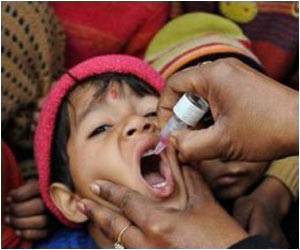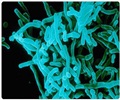While the goal of polio virus eradication is in sight, there are concerns about post-eradication manufacturing and stockpiling vaccine stores containing live virus.

TOP INSIGHT
After polio eradication, WHO plans to stop the use of live-attenuated vaccines. In addition, to improve safety, they have encouraged new manufacturers to switch the source of inactivated virus from virulent wild-type strains to an attenuated strain.
The researchers started with a Sabin vaccine strain whose attenuation and reversion has been extensively studied and is well understood. Based on this knowledge, they modified a particular region of the viral RNA in ways that they predicted would make the resulting strains genetically stable (i.e. they would not revert to wild-type or other virulent forms). They then compared these new strains with both the original Sabin vaccine strain and the wild-type strain currently used in the production of inactivated vaccine.
Besides testing the genetic stability of the new strains, the researchers examined their ability to grow in tissue culture (necessary for vaccine production), their risk for causing paralysis in mice engineered to carry a human polio-virus receptor, and whether--after inactivation--they effectively immunized rats. Finally it was shown that these new strains were unable to infect primates by mouth. In all these tests, the new strains behaved as predicted, that is, they are effective, suitable to mass production, and safer than the alternatives.
The researchers concluded, "We have developed new strains for IPV production with negligible risk to the human population should they escape and the attributes of the new strains allow for safe vaccine production in the post-eradication world."
To address whether the use of new vaccine strains is compatible with WHO's stated post-polio eradication strategy, the researchers state that the current WHO action plan leaves open the option of assessing new derivatives by an expert panel that will compare the novel strains to the Sabin strains with respect to degree and stability of attenuation, potential for person to person transmission and neurovirulence in animal models to define the containment required which is not specified. The researchers would like their strains assessed in this way. At the very least, they say, this will establish a system for assessment, which they think is necessary.
 MEDINDIA
MEDINDIA



 Email
Email








